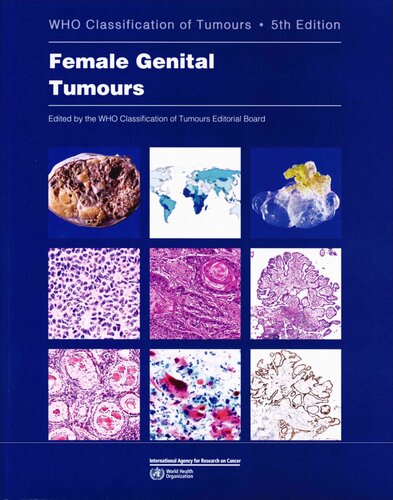

Most ebook files are in PDF format, so you can easily read them using various software such as Foxit Reader or directly on the Google Chrome browser.
Some ebook files are released by publishers in other formats such as .awz, .mobi, .epub, .fb2, etc. You may need to install specific software to read these formats on mobile/PC, such as Calibre.
Please read the tutorial at this link: https://ebookbell.com/faq
We offer FREE conversion to the popular formats you request; however, this may take some time. Therefore, right after payment, please email us, and we will try to provide the service as quickly as possible.
For some exceptional file formats or broken links (if any), please refrain from opening any disputes. Instead, email us first, and we will try to assist within a maximum of 6 hours.
EbookBell Team

4.7
106 reviewsFemale Genital Tumours is the fourth volume in the 5th edition of the WHO series on the classification of human tumours. This series (also known as the WHO Blue Books) is regarded as the gold standard for the diagnosis of tumours and comprises a unique synthesis of histopathological diagnosis with digital and molecular pathology. These authoritative and concise reference books provide indispensable international standards for anyone involved in the care of patients with cancer or in cancer research, underpinning individual patient treatment as well as research into all aspects of cancer causation, prevention, therapy, and education.
What's new in this edition?
The 5th edition, guided by the WHO Classification of Tumours Editorial Board, will establish a single coherent cancer classification presented across a collection of individual volumes organized on the basis of anatomical site (digestive system, breast, soft tissue and bone, etc.) and structured in a systematic manner, with each tumour type listed within a taxonomic classification: site, category, family (class), type, and subtype. In each volume, the entities are now listed from benign to malignant and are described under an updated set of headings, including histopathology, diagnostic molecular pathology, staging, and easy-to-read essential and desirable diagnostic criteria.
Who should read this book?
- Pathologists
- Oncologists
- Cancer researchers
- Surgeons
- Epidemiologists
- Cancer registrars
This volume
- Prepared by 191 authors and editors
- Contributors from around the world
- More than 850 high-quality images
- More than 3100 references